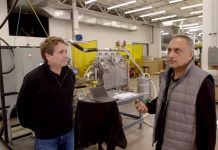Born in 1882, Robert Goddard could easily be considered the Father of Modern Spaceflight. He was an engineer and a theorist and has over 200 patented inventions to his credit. Two of these inventions, a rocket that is powered by liquid rocket fuel and a multi-stage rocket, both patented in 1914, were critical to the success of being able to achieve space flight. He also applied three-axis control, steerable thrust, and gyroscopic control to rockets so their flight could be controlled.
Here are just some of the highlights of Robert Goddard’s inventive career.
The Vacuum Tube For Radio
For a long time, radio was the place where innovation was taking place. In order for radio to work properly, however, it needed power to generate waves that would take sounds out into the world on a specific frequency. One of Goddard’s first inventions was a vacuum tube that was able to operate like a cathode-ray tube and this helped to generate an enhanced radio frequency power.
Rocket Propelled Explosives
The feasibility of using rockets to travel into space was not something that the general population took seriously in Goddard’s time. In order to fuel his research, he took on military contracts that would help him study the mechanics of what we’d call modern rocket science while producing innovations for the military. One of those innovations was a precursor of the rocket propelled grenade [RPG] or the bazooka. From a hand launcher, small rockets could be launched by soldiers during World War I.
The Static Test
One of the scientific theories that were popular during Goddard’s time was that nothing could be propelled in space because it was a vacuum environment. Scientists at the time believed that for anything to be able to successfully move, it needed air to push against. What Goddard invented was the static test, which proved a rocket [or anything else] would be able to work in a vacuum environment.
Scientific Payloads
Because space travel for humans was seen as science fiction at best, the concept of using a rocket for anything but a weapon would just blow people’s minds. It took Goddard over a decade to launch a rocket that could handle a scientific payload because of the resistance to rocket technology during this time. In 1929, however, he launched a rocket with a camera and a barometer so that rocket flight could be shown to have a scientific purpose as well.
Liquid Rocket Fuel
As World War II progressed, Goddard was extremely worried that the Germans would utilize his technology for their purposes. After all, it was German scientists that were taking his ideas about rockets seriously. Goddard even showed the US government video of his experiments and received no support. Yet when V2 rockets landed on London in 1944, it was discovered that the Germans and converted Goddard’s ideas into their creation. At the center of this was his stable liquid fuel instead of solid fuel that was used for rocket flight. This gave rockets more power, which in turn gave it more lift.
Strong proponent of individual liberty and free speech. My goal is to present information that expands our awareness of crucial issues and exposes the manufactured illusion of freedom that we are sold in America. Question everything because nothing is what it seems.




















